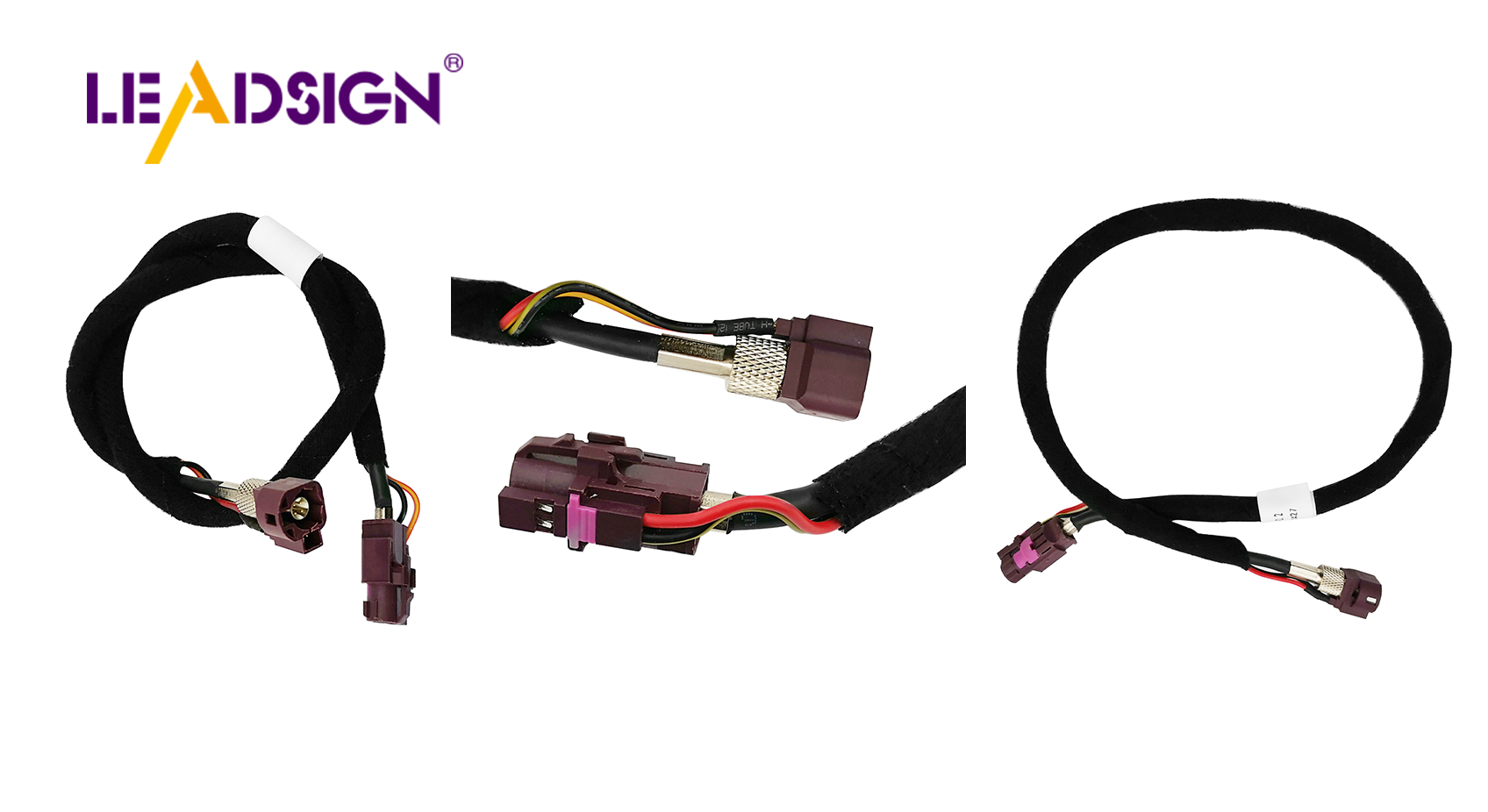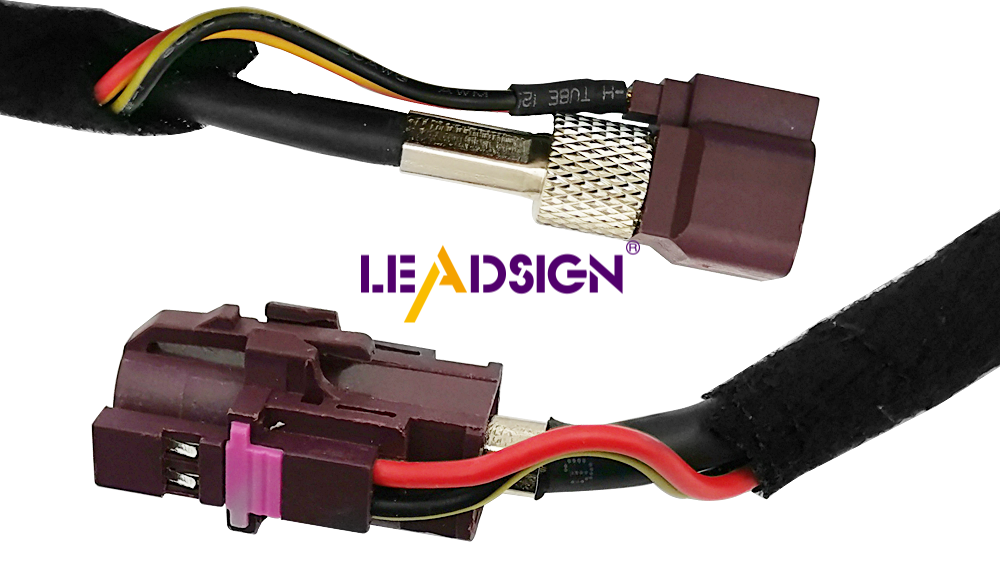Step-by-Step Tips for Automotive Wiring Harness Kit Setup

Installing auto harness connectors the right way is very important. A good wiring setup stops electrical problems and lowers fire risks. It also makes sure safety features like airbags work properly. Bad setups can cause the engine to stop or parts to fail. Using strong materials and being careful saves money on repairs and keeps your car safe.
Key Takeaways
Use proper tools like wire cutters and crimpers for easier work.
Pick strong materials that handle heat and last a long time.
Mark wires clearly to prevent errors and fix problems faster.
Tools and Preparation for Auto Harness Connectors

Essential Tools for Automotive Wiring
Get the right tools before you begin. This makes work easier and safer. You’ll need wire strippers, crimping tools, and a multimeter. A heat gun helps shrink tubing to protect wires. Keep screwdrivers and pliers nearby for securing parts. Use butt connectors to join wires tightly. A soldering iron is great for strong, lasting connections. Always pick tools made for cars to ensure they last and work well.
Choosing High-Quality Materials
Good materials make your wiring last longer and work better. Pick wires that handle heat well. For example, 90℃ wires are fine for cabins, but engine areas need 180℃ wires. Wires that resist wear won’t break from shaking. Fire-resistant materials lower fire risks. Flexible parts handle bending without breaking. Use this table to help choose:
Feature | What It Means |
|---|---|
Heat Resistance | Choose wires based on temperature needs: 90℃ for cabins, 180℃ for engines. |
Wear Resistance | Wires should not break or leak when near moving parts. |
Fire Resistance | Materials should burn less and stop flames quickly. |
Flexibility | Parts should bend many times without breaking. |
Focus on splicing and connection points. Crimping and splicing correctly keeps wires strong and safe.
Setting Up a Safe Workspace
A safe workspace helps avoid mistakes and accidents. Work in a bright area with enough room for tools. Keep your space clean so you don’t lose small parts. Use a surface that doesn’t conduct electricity to stay safe. Disconnect the car battery to avoid shocks. Arrange tools and wires neatly to save time and prevent errors.
Understanding Wire Harnesses and Their Parts
Important Parts of Wire Harnesses
A wiring harness is a group of wires and connectors. It powers your car’s electrical systems and keeps them safe. Each part has a job to make your car work well.
Connectors: These link wires to circuits and power sources. They help electricity go where it’s needed.
Fuses: These stop damage by breaking the circuit if too much electricity flows.
Fuse Blocks: These hold many fuses, protecting circuits without affecting others.
Relays: These handle strong currents by pulling power straight from the battery.
These parts work together to power your car’s engine, lights, and safety features.
Reading Wiring Diagrams Made Simple
Wiring diagrams are like maps for your car’s electrical system. Learning them makes setup and fixing easier. Start by knowing the symbols. Lines show wires, and circles often mean connectors. Labels tell you wire colors and uses. Follow the diagram to see how parts connect. Grounding points are very important for safety. Practice with easy diagrams before trying harder ones.
Easy Ways to Label Wires
Labeling wires helps you avoid mistakes and saves time. Try these methods to keep your wires neat:
Heat-Shrink Tubing: Slide tubing on the wire, heat it, and label it.
Self-Laminating Labels: Clean the wire, stick the label, and press it firmly.
Printable Markers: Write directly on the wire for quick labeling.
Cable Flags: Clip flexible flags onto wires for temporary labels.
Non-Adhesive Tags: Tie tags with string or clips for bigger wires.
Use the same labeling style and make a diagram for reference. This helps you find wires easily later.
Attaching Wire Harnesses: Step-by-Step Guide
Checking and Getting the Harness Ready
Before starting, check the harness to make sure it’s good. Follow these steps:
Test the wires. Look for shorts, breaks, or wrong resistance.
Check for damage. Look for broken wires or bad connectors.
Make sure the harness fits your car’s needs.
Checking first avoids problems later and makes setup easier.
Placing Wires Safely
Place wires carefully to keep them safe from harm. Stay away from sharp edges, moving parts, or hot areas like the engine. Use clips or grommets to hold wires in place. This stops rubbing and keeps wires neat. Bundling wires also helps with future fixes.
Joining Wires: Crimping or Soldering
When joining wires, pick crimping or soldering. Each has good and bad points:
Crimping: It’s quick and seals tightly. You’ll need special tools.
Soldering: It’s cheap and easy to learn. But it takes time and may not handle shaking well.
Choose the one that works best for your skills and project.
Protecting Wires with Tubing and Grommets
Use heat shrink tubing and grommets to keep wires safe. Tubing stops short circuits and protects wires from damage. Grommets guard wires passing through holes, stopping wear. These tools also keep wires tidy and easy to work with.
Securing and Grounding the Harness
Hold the harness in place with ties or clamps. Don’t tighten too much, or wires might get damaged. Clean grounding spots to remove rust. Good grounding keeps your car’s electrical system safe and working well. Check all connections before finishing.
Pro Tip: Label wires while working to save time later.
Common Mistakes When Installing Automotive Wiring
Over-Tightening Cable Ties
Cable ties help keep wires neat and secure. But pulling them too tight can harm the wires. Tight ties may crack or tear the wire covering. This leaves wires exposed, which can cause short circuits. To avoid this, tighten ties just enough to hold wires. Adjustable ties or Velcro straps are safer options. Always check that wires can move a little inside the tie. This prevents extra pressure and keeps them safe.
Skipping Connector Cleaning
Dirty connectors often cause electrical problems in cars. Dust or grease can block electricity from flowing properly. This can make systems work poorly or stop completely. Clean connectors before attaching wires. Use a small brush or contact cleaner to remove dirt. For tough corrosion, gently sand with fine-grit sandpaper. After cleaning, check for any damage. Clean connectors work better and lower the chance of overheating.
Using Substandard Materials
Cheap materials can cause big problems like melting wires or failures. Wires that can’t handle heat may melt near engines. Weak connectors might loosen and cause power issues. Always pick materials made for cars. Use heat-resistant wires and strong connectors. If unsure, ask an expert for advice. Spending more on good parts saves time and money later.
Tip: Check your tools and materials before starting. Quality parts improve safety and last longer.
Safety Tips for Installing Auto Harness Connectors
Disconnecting the Battery
Unplugging the battery is the first step to stay safe. It stops shocks or short circuits while working on wires. Follow these safety rules:
What to Do | |
|---|---|
No flames allowed | Keep fire and smoking items far from the battery. |
Use gloves and goggles to protect from sparks or acid. | |
Avoid short circuits | Don’t let metal touch both battery terminals at once. |
Remove cables in order | Take off the negative cable first. |
Attach cables in order | Put the negative cable back last when reconnecting. |
Also:
Take off metal jewelry to avoid touching wires accidentally.
Turn off the car and make sure the ignition is off.
Keep loose cables away from the battery to stop reconnections.
These steps keep you and your car’s wiring safe during setup.
Avoiding Exposed Wires
Exposed wires can cause fires, shorts, or system problems. Check the harness for broken insulation before starting. Cover bare wires with heat shrink tubing or tape. Keep wires away from sharp edges or moving parts to avoid damage. Use grommets or clips to hold wires safely in place. This simple step saves money and keeps your wiring working well.
Testing Connections Before Finalizing
Test all connections before finishing to make sure they work. Use a multimeter to check voltage and continuity. Ensure grounding points are clean and tight to avoid problems. Test each circuit one by one to confirm they work properly. This step ensures your wiring is safe and ready to use. Skipping it could mean fixing problems later.
Pro Tip: Check pigtail connectors to ensure they fit tightly. Loose ones can cause electrical issues.
By following these tips, you can finish your wiring project safely and confidently.
Maintenance and Troubleshooting for Wire Harnesses
Long-Term Maintenance Tips
Taking care of your wire harness keeps your car running well. Follow these simple tips to make it last longer:
Keep wires secure. Place harnesses on stable paths to stop extra movement. Avoid sharp edges or hot spots.
Use ties and clamps. Hold wires in place to stop shaking or rubbing. This keeps the insulation safe.
Add strain relief. Protect connection points from pulling or bending damage.
Shield from chemicals. Pick harnesses that resist oils, coolants, and other car fluids.
Check your harness often to find small problems early. Look for loose wires, worn coverings, or rust. A little care can keep your wiring safe and working well.
Diagnosing Common Issues
Problems with wire harnesses can cause electrical failures. Look for these signs to fix them:
Loose connections. Check for connectors that don’t fit tightly.
Rust or dirt. Look for corrosion that blocks electricity.
Damaged wires. Find frayed or broken coverings.
Wrong connections. Use a diagram to check if wires are connected correctly.
To fix issues, clean dirty connectors and replace broken parts. If wires overheat or don’t fit, it might be a design problem. Using good tools and skilled workers can stop these issues. Always choose strong materials to avoid cheap part failures.
Pro Tip: Use a multimeter to test fixed wires. Make sure voltage and flow are correct before finishing repairs.
Following these steps helps you install your wiring harness safely. Always check wire size, crimped ends, and cable strength. A good setup ensures signals and power flow properly in your car. Using safe methods and strong materials lowers risks and boosts reliability. This also keeps your car running better for a long time.
Remember: Doing it right protects your car and saves money later.
FAQ
How can you test a wiring harness after setting it up?
Check wires with a multimeter. Look for correct voltage and continuity. Test one circuit at a time to find breaks or shorts.
How do you pick the right wire size for your project?
Choose wire size based on the current it needs to carry. Use a wire gauge chart to stop overheating or losing power.
Should you reuse old connectors when adding a new harness?
Don’t reuse old connectors. They might be damaged or rusty. Always pick new, strong connectors for better performance.
See Also
Understanding HSD Connectors Essential for Automotive Applications
An In-Depth Overview of HSD Connectors Explained
Improving Vehicle Communication Using FAKRA PCB Connectors
A Complete Overview of Ford's Fakra Connectors
Boosting Data Transmission in Vehicles with FAKRA Connectors

